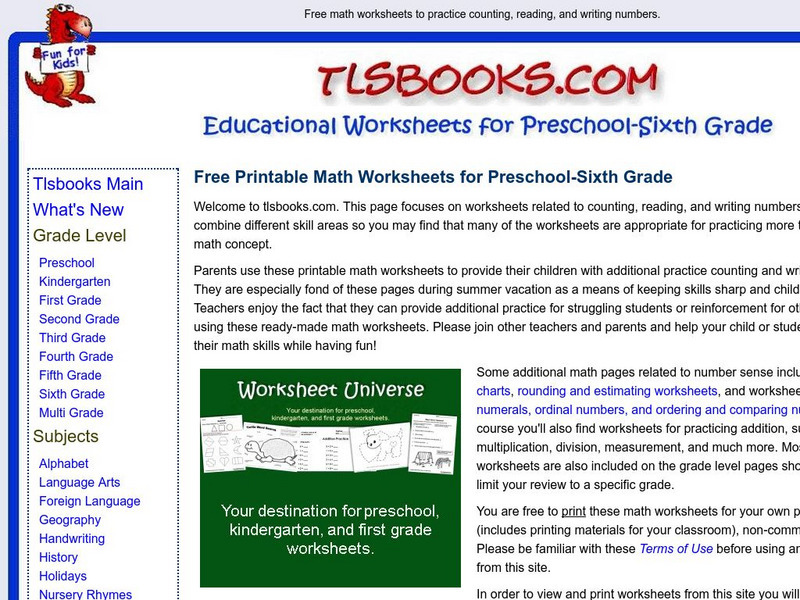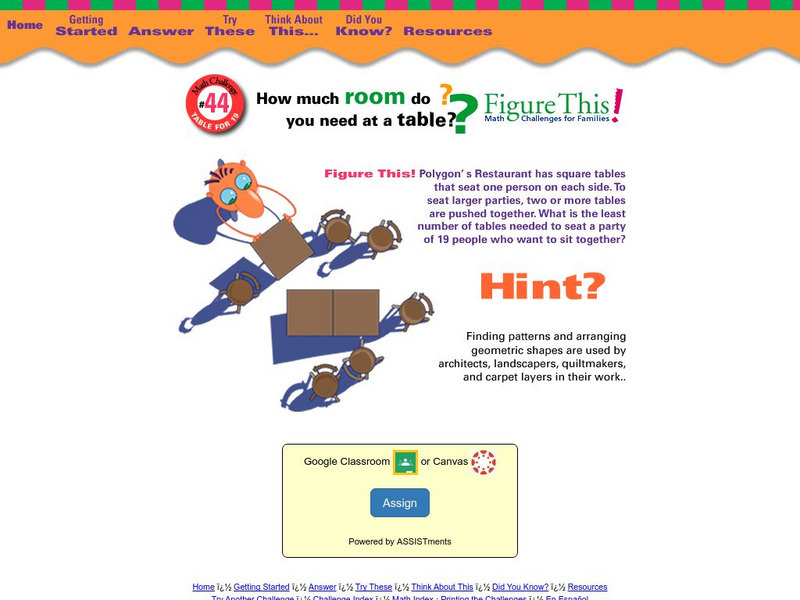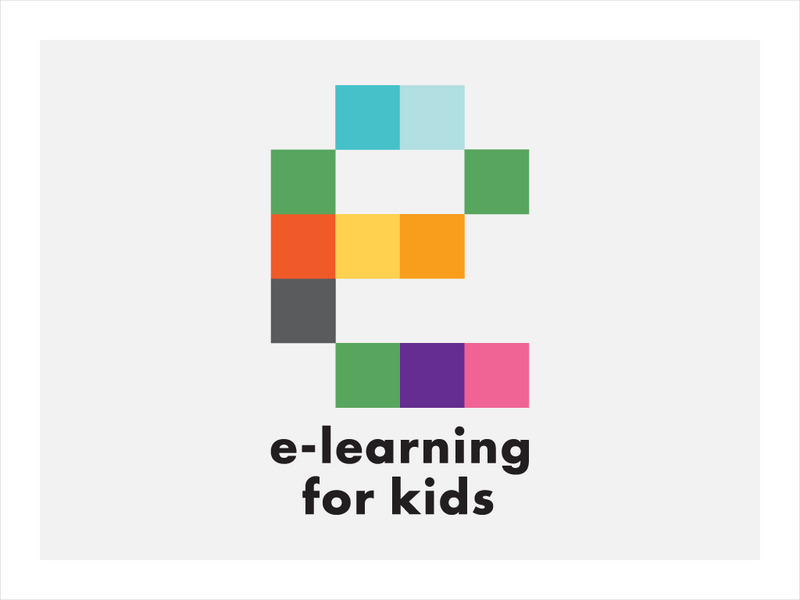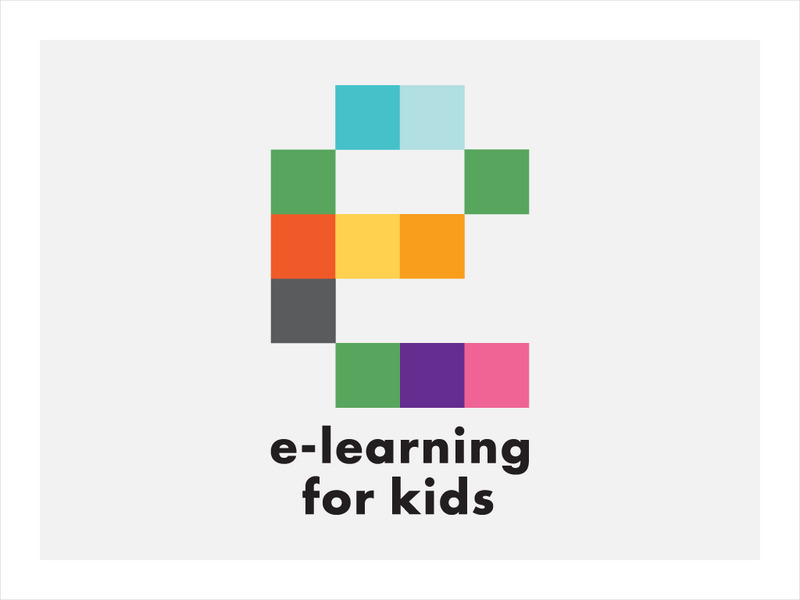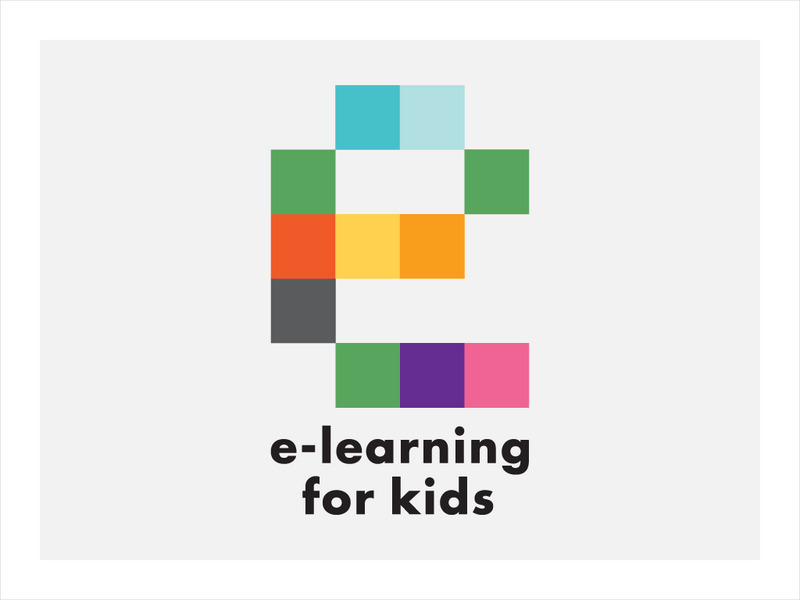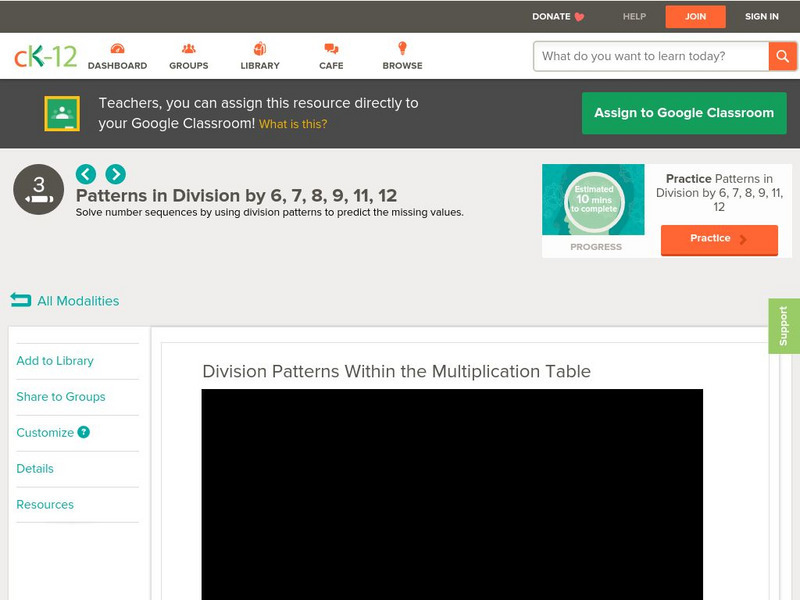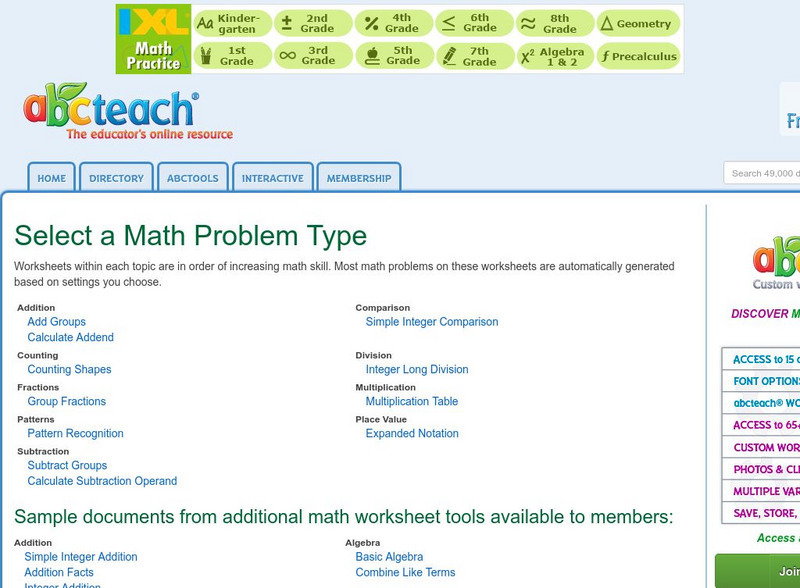Hi, what do you want to do?
E-learning for Kids
E Learning for Kids: Math: School Bus: Pattern and Function: Number Patterns
Students will play a variety of learning games to explore and practice number patterns.
E-learning for Kids
E Learning for Kids: Math: Soccer Stadium: Pattern and Function
Students will explore patterns through interactive activities.
PBS
Wnet: Thirteen: Math in Basketball: Lesson Plan
In this lesson plan, students will explore ways that mathematics are used in basketball. Students will explore the concept of a function and will learn to use function notation. Students will recognize, describe, and represent quadratic...
Khan Academy
Khan Academy: Math Patterns 1
Identify arithmetic patterns (including ones in the addition or multiplication tables), and explain them using properties of operations. Students receive immediate feedback and have the opportunity to try questions repeatedly, watch a...
E-learning for Kids
E Learning for Kids: Math: School Bus: Missing Terms: Number Patterns
Students play a variety of learning games to explore number patterns by finding missing terms, using a calculator, and studying tables and a hundreds chart.
Soft Schools
Soft Schools: Patterns, Relationships, and Algebraic Reasoning Quiz
Students are assessed on their math skills (knowledge of ratios, percentages, volume, and measurement conversions), as well as their ability to write equations, read tables, and analyze information. This quiz was designed to help...
Other
The Actuarial Foundation: Math Academy: Can You See It in Nature? [Pdf]
Students will build, extend, describe, predict, graph and generate rules for patterns and functions designed to help students understand the connection between geometric and numerical patterns (younger students) as well as between...
Other
Kid's Page Archive: Free Printable Math Worksheets
Great source for math worksheets on all four whole number operations, fractions, and miscellaneous arithmetic topics. Could be used to assess basic arithmetic skills for areas that need remediation.
National Council of Teachers of Mathematics
Nctm: Figure This: Table for 19 (Pdf)
The waiters at Polygon's Restaurant need your help. See if you can use your problem solving and patterning skills to help them solve this math challenge. Discover how developing these skills could be useful in real life situations, in...
Khan Academy
Khan Academy: Patterns in Multiplication Tables
Practice discovering and explaining patterns in multiplication tables. Students receive immediate feedback and have the opportunity to try questions repeatedly, watch a video or receive hints. CCSS.Math.Content.3.OA.D.9 Identify...
Illustrative Mathematics
Illustrative Mathematics: 3.oa Patterns in the Multiplication Table
The goal is to look for structure and identify patterns in the multiplication table and then try to find the mathematical explanation for this. Aligns with CCSS.Math.Content.3.OA.D.9 Identify arithmetic patterns, and explain them using...
E-learning for Kids
E Learning for Kids: Math: Wild Park: Number Patterns
Students will play learning games that teach students how to graph patterns and tables.
E-learning for Kids
E Learning for Kids: Math: Fashion Store: Number Patterns
On this interactive website, students practice various math skills using a real-life scenario at a fashion store. Those skills include creating number patterns, making a number sentence to represent a word problem, and making a table of...
E-learning for Kids
E Learning for Kids: Math: Surfing: Patterns
Play interactive games to determine the number patterns and sequences.
PBS
Pbs: Toothpicks: Patterns in Geometric Shapes
How can you describe the pattern made by a growing triangular shape? This interactive exercise focuses on using what you know about pattern recognition and completing a table so you have data you can use to graph the coordinates on a...
PBS
Pbs Learning Media: Arrangement 2
In this video segment from Cyberchase, Matt tries for a second time to arrange tables and chairs to accommodate 20 workers.
PBS
Pbs Learning Media: Patterns of Factors
Demonstrate your grasp of patterns and factors by sorting the numbers into the correct columns. This interactive table focuses on factor pairs and prime factors for the numbers 2 to 36.
CK-12 Foundation
Ck 12: Elem Math: Division Patterns Within the Multiplication Table
[Free Registration/Login may be required to access all resource tools.] Students practice with basic division facts using a multiplication table. CCSS.Math.Content.3.OA.C.7 Fluently multiply and divide within 100
CK-12 Foundation
Ck 12: Elem Math: Division Patterns Within the Multiplication Table
[Free Registration/Login may be required to access all resource tools.] In this learning module, students relate division patterns to the patterns in a multiplication table. Includes video demonstrating a sample problem [1:21] and a set...
CK-12 Foundation
Ck 12: Elem Math: Complete the Number Patterns Based on the Multiplication Table
[Free Registration/Login may be required to access all resource tools.] The video describes how to use repeated addition to show the pattern for multiplying by 6.
CK-12 Foundation
Ck 12: Elem Math: Inequalities
[Free Registration/Login may be required to access all resource tools.] For this learning module, students are given a number sentence expressed as an inequality and must fill in a blank to make it true. Includes video demonstrating a...
Math Cats
Math Cat: Fact Family Card
Everything you need to know about fact families can be found here. Discover what fact families are and learn different strategies for using them. Links included to print your own fact family cards, create a fact family house, and play a...
abcteach
Abcteach: Select a Math Problem Type
Generate worksheets for math problems ranging from simple addition problems to place value with expanded notation for free. Your choice of font, font size, color and landscape when printing.
Rice University
Rice University: The Hand Squeeze
Students will enjoy this data collection and class analysis experiment involving the time it takes for a hand squeeze to travel around a circle of people. From organizing the activity to collecting the data to making a table and graphing...





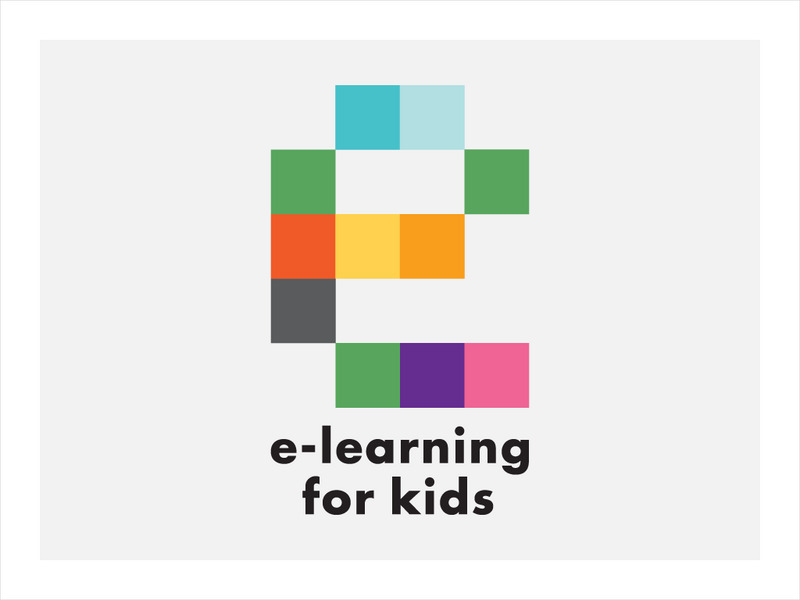

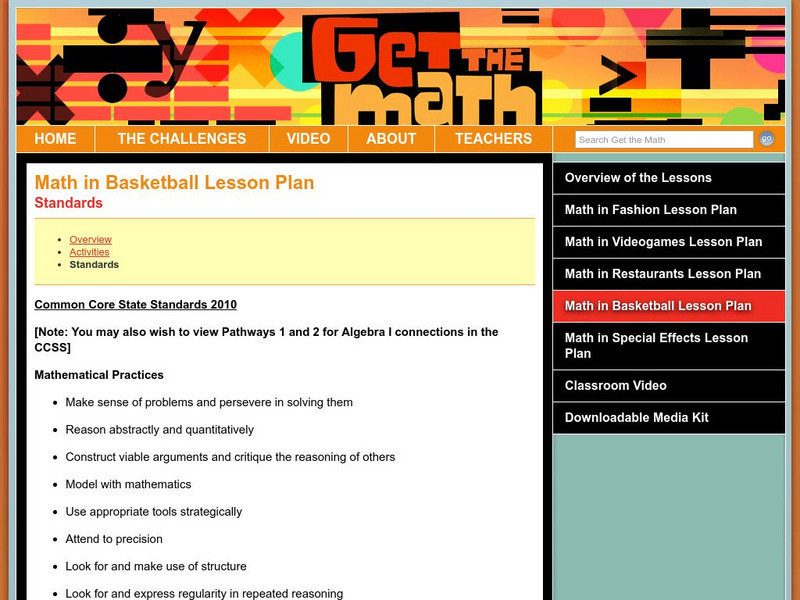


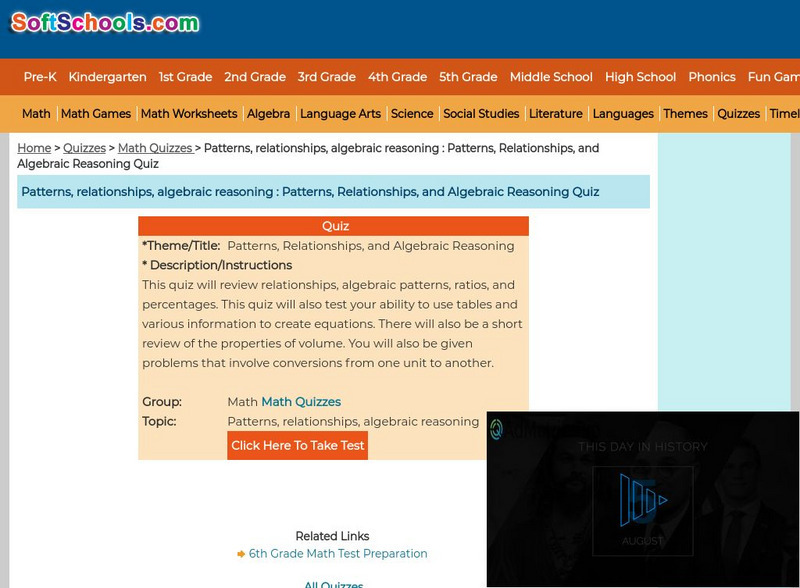
![The Actuarial Foundation: Math Academy: Can You See It in Nature? [Pdf] Lesson Plan The Actuarial Foundation: Math Academy: Can You See It in Nature? [Pdf] Lesson Plan](https://static.lp.lexp.cloud/images/attachment_defaults/resource/large/FPO-knovation.png)
